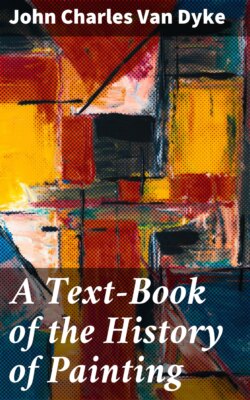Читать книгу A Text-Book of the History of Painting - John Charles Van Dyke - Страница 8
На сайте Литреса книга снята с продажи.
PERSIAN PAINTING.
ОглавлениеTable of Contents
Books Recommended: As before cited, Babelon, Duncker, Lenormant, Ely; Dieulafoy, L'Art Antique de la Perse; Flandin et Coste, Voyage en Perse; Justi, Geschichte des alten Persiens; Perrot and Chipiez, History of Art in Persia.
HISTORY AND ART MOTIVES: The Medes and Persians were the natural inheritors of Assyrian civilization, but they did not improve their birthright. The Medes soon lost their power. Cyrus conquered them, and established the powerful Persian monarchy upheld for two hundred years by Cambyses, Darius, and Xerxes. Substantially the same conditions surrounded the Persians as the Assyrians—that is, so far as art production was concerned. Their conceptions of life were similar, and their use of art was for historic illustration of kingly doings and ornamental embellishment of kingly palaces. Both sculpture and painting were accessories of architecture.
Of Median art nothing remains. The Persians left the record, but it was not wholly of their own invention, nor was it very extensive or brilliant. It had little originality about it, and was really only an echo of Assyria. The sculptors and painters copied their Assyrian predecessors, repeating at Persepolis what had been better told at Nineveh.
FIG. 8.—LIONS' FRIEZE, SUSA. (FROM PERROT AND CHIPIEZ.)
TYPES AND TECHNIC: The same subjects, types, and technical methods in bas-relief, tile, and painting on plaster were followed under Darius as under Shalmanezer. But the imitation was not so good as the original. The warrior, the winged monsters, the animals all lost something of their air of brutal defiance and their strength of modelling. Heroes still walked in procession along the bas-reliefs and glazed tiles, but the figure was smaller, more effeminate, the hair and beard were not so long, the drapery fell in slightly indicated folds at times, and there was a profusion of ornamental detail. Some of this detail and some modifications in the figure showed the influence of foreign nations other than the Greek; but, in the main, Persian art followed in the footsteps of Assyrian art. It was the last reflection of Mesopotamian splendor. For with the conquest of Persia by Alexander the book of expressive art in that valley was closed, and, under Islam, it remains closed to this day.
ART REMAINS: Persian painting is something about which little is known because little remains. The Louvre contains some reconstructed friezes made in mosaics of stamped brick and square tile, showing figures of lions and a number of archers. The coloring is particularly rich, and may give some idea of Persian pigments. Aside from the chief museums of Europe the bulk of Persian art is still seen half-buried in the ruins of Persepolis and elsewhere.
